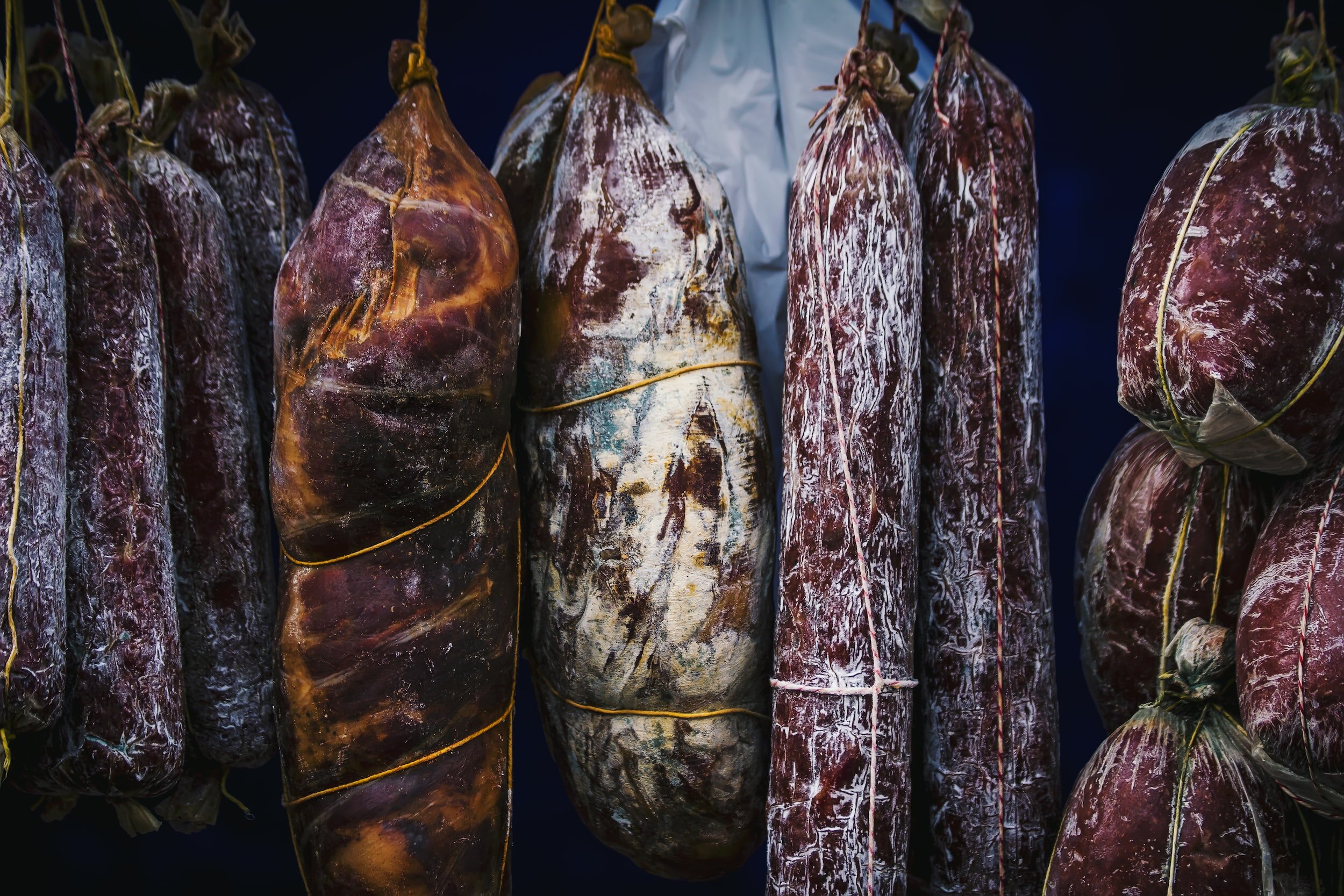
Pronunciation: tem-prah-NEE-yo
Tempranillo, a red wine varietal, finds itself at home in some of the world’s most renowned Spanish wines. Whether you’re a wine enthusiast or a curious beginner, this comprehensive guide introduces you to the world of Tempranillo.
- What Kind of Wine is Tempranillo?
- Where Does Tempranillo Wine Come From?
- What Does Tempranillo Smell Like?
- What Does Tempranillo Taste Like?
- How to Serve Tempranillo Wine
- What Is Another Name for Tempranillo: Tempranillo Synonyms
- Tempranillo Food Pairing Suggestions
- Tempranillo vs. Other Varietals
- Sustainable Practices in Tempranillo Vineyards
- Emerging Trends and Innovations
- Notable Tempranillo Producers and Bottles to Try
- Final Thoughts – Tempranillo as a Must-Try Red Wine Varietal
What Kind of Wine is Tempranillo?
Tempranillo is a medium-bodied red wine with moderate acidity, balanced tannins, and moderate alcohol content. Its style often falls between lighter wines like Pinot Noir and fuller-bodied wines like Cabernet Sauvignon.
Where Does Tempranillo Wine Come From?

Tempranillo, a grape variety with a rich history, originates from Spain and holds deep roots in the country’s winemaking traditions. It serves as the primary grape in renowned Spanish wine regions.
Fun Wine Fact: The name “Tempranillo” is derived from the Spanish word “temprano,” meaning early, as the grape tends to ripen earlier than many other red grape varieties, making it an ideal choice for regions with shorter growing seasons.
Tempranillo in Rioja
Check out this map of Rioja. Scroll out to explore.
In Rioja, Tempranillo takes center stage as one of the most prominent grape varieties. The region showcases the exceptional use of Tempranillo in winemaking, producing a wide range of high-quality red wines.
Tempranillo in Ribera del Duero
Check out this map of Ribera del Duero. Scroll out to explore.
Ribera del Duero, another esteemed Spanish wine region, also embraces Tempranillo as a key grape. Here, it thrives in the region’s diverse terroir, contributing to the production of remarkable red wines renowned for their depth and complexity.
Helpful Wine Buying Tip: If you come across Spanish wines labeled with these DOs (Denominación de Origen), it’s likely to be Tempranillo: Rioja, Ribera del Duero, Toro, and Navarra.
Other Notable Tempranillo Growing Regions
Beyond Spain, Tempranillo has gained recognition in various wine regions worldwide. In Portugal, it is known as Tinta Roriz and plays a significant role in crafting exceptional wines, particularly in the Douro Valley.
Additionally, Tempranillo is increasingly cultivated in regions such as:
- Argentina
- Australia
- California
- Texas
In each region, Tempranillo showcases its unique characteristics.
What Does Tempranillo Smell Like?

Tempranillo offers an enticing array of aromas. It presents a harmonious blend of red fruits, including cherry and raspberry, complemented by subtle hints of vanilla, tobacco, and leather. In certain expressions, you might also detect earthy notes or a touch of spice, adding complexity to its aromatic profile.
Here’s a list of my descriptors from a recent Tempranillo tasting:
- Black cherry
- Black licorice
- Caramel
- Warm spice
- Dark chocolate
- Sanguine
- Orange peel
- Graphite
- Plum
- Raisin (aged Tempranillo)
- Cigar
- Earth
Fun Wine Fact: Tempranillo is one of the key grape varieties used in the production of Port wines, renowned for their richness and depth. In Portugal, Tempranillo goes by Tinta Roriz and Aragonez.
What Does Tempranillo Taste Like?
Tempranillo delights the palate with its vibrant flavors and remarkable character. It showcases a range of taste profiles influenced by various factors, such as terroir and winemaking techniques.
Expect flavors of ripe red berries, plum, and sometimes a touch of dried herbs. The wine’s acidity brings freshness and balance, while the tannins provide a smooth and velvety texture.
Helpful Tip: Check out this 30-second tasting tip on how to taste wine tannins.
I often find Tempranillo to be an elegant and approachable red wine, standing out with its distinctive character, especially when compared to bolder varietals like Cabernet Sauvignon and Zinfandel.
Is Tempranillo a Heavy Wine?
Tempranillo wines from warmer regions can have heavier bodies, however, the grape does best in more temperate climates and most Tempranillo wines fall within the medium-bodied category.
How Much Does Tempranillo Wine Cost?
- Entry-level Tempranillo wines: $10 to $20 USD
- Mid-range Tempranillo wines: $20 to $50 USD
- Premium Tempranillo wines: $50 to $100 USD
- Iconic Tempranillo wines: $100+ USD
Is Tempranillo Wine Sweet or Dry?
Tempranillo wine is typically dry, but it can vary depending on the winemaking style.
How to Serve Tempranillo Wine

Temperature
Serve Tempranillo slightly below room temperature, around 60-65°F (15-18°C). This allows the wine to express its aromas fully while preserving its freshness.
Glassware
Opt for a standard red wine glass with a slightly tapered rim and a bowl that allows the wine to breathe. This shape enhances the wine’s aromas, making them more pronounced and enjoyable.
Decanting
Lighter styles of Tempranillo may benefit from a brief decanting, while more robust and mature wines can be decanted for 30 minutes or more to enhance their flavors. If you feel the wine is tightly wound, let it breathe in the glass for a few minutes before tasting.
Aging Potential
Tempranillo has excellent aging potential.
- Lighter-bodied Tempranillo wines can improve with 3-5 years of cellaring.
- Fuller-bodied and structured Tempranillos can age gracefully for 5-10+ years.
Is Tempranillo a Good Sipping Wine?
Tempranillo isn’t a great sipping wine, and it’s better to enjoy Tempranillo paired with food. You can pair it with a full meal, or a simple snack of cheese and crackers. You’ll find that the food helps balance the wine’s fruits, tannins, and acid.
What Is Another Name for Tempranillo: Tempranillo Synonyms
Tempranillo is known by various names depending on the region and context. Some synonyms for Tempranillo include Tinta Roriz and Aragonez (in Portugal), Tinto Fino, Tinto del País, and Cencibel (in Spain).
Tempranillo Food Pairing Suggestions
Tempranillo’s definitely a food wine. Pair it with grilled or roasted meats, such as lamb, beef, or game. Spanish classics like paella and tapas, as well as flavorful cheeses and charcuterie, also make excellent partners for Tempranillo.
Quick Tips: Tempranillo Food Pairing

- Grilled pork chops with rosemary
- Spanish chorizo and manchego cheese
- Mushroom and truffle risotto
Check out this complete guide to Tempranillo food pairing if you need more inspiration, along with this Tempranillo cheese pairing guide.
Tempranillo vs. Other Varietals
While Tempranillo shares some similarities with Cabernet Sauvignon and Merlot, it has its own distinct personality. Tempranillo offers a balanced and approachable character with vibrant fruit flavors and a refined structure. Most Tempranillos will taste brighter than Merlot thanks to bright acid.
Tempranillo’s ability to showcase regional diversity and a unique taste profile sets it apart from other red varietals, making it a wine you’ll want to try from multiple producers.
Sustainable Practices in Tempranillo Vineyards

In today’s wine production, sustainable viticulture plays a crucial role. Many Tempranillo vineyard growers embrace organic farming and biodynamic practices, prioritizing environmental health and minimizing chemical interventions.
Fortunately, many vineyards that grow Tempranillo find themselves in regions that enjoy warm, dry summers.
This means fewer chemical inputs to suppress rot through the growing season.
Even if your wine bottle doesn’t say “organic” on it, chances are good that the grapes in your wine needed fewer chemical interventions through the growing season.
By preserving the natural balance of the vineyards, winemakers create Tempranillo wines that genuinely reflect their terroir.
Fun Wine Fact: Tempranillo is Spain’s most widely planted red wine grape and is a key component in the world-famous Rioja wines.
Emerging Trends and Innovations
The wine world is constantly evolving, and Tempranillo is no exception. Winemakers are continuously experimenting with new techniques and styles, pushing the boundaries of tradition. From modern winemaking practices to aging in different types of oak barrels, these innovations add exciting dimensions to the already captivating character of Tempranillo.
Notable Tempranillo Producers and Bottles to Try

When exploring Tempranillo, it’s worth seeking out producers that specialize in crafting exceptional wines with this grape variety. Keep an eye out for wineries renowned for their dedication to Tempranillo production. Some notable wineries include:
- Bodegas Roda (Rioja, Spain)
- Emilio Moro (Ribera del Duero, Spain)
- Vega Sicilia (Ribera del Duero, Spain)
These wineries offer a range of Tempranillo wines, each showcasing the grape’s character and the unique qualities of their respective regions.
Final Thoughts – Tempranillo as a Must-Try Red Wine Varietal
With its vibrant fruit flavors, refined structure, and the potential for aging, Tempranillo’s a wine that can be enjoyed on various occasions and paired with a wide range of dishes.
Here are three key takeaways to remember:
- Distinctive Flavor Profile: Tempranillo offers flavors of ripe red berries, plum, and hints of dried herbs. Its acidity provides freshness, while the tannins deliver a smooth and velvety texture.
- Food-Friendly: Tempranillo pairs well with a variety of dishes, including grilled or roasted meats, Spanish classics like paella and tapas, and flavorful cheeses and charcuterie.
- Regional Diversity and Aging Potential: Tempranillo showcases regional diversity, with different expressions across Spain and Portugal.
Tempranillo deserves a place among the must-try red wine varietals.
Thirsty for More?
Head over to this post for a more in-depth look at Spanish Red Wines that you need to explore, and here’s a post that dives into delicious white Spanish wines.
Love bold red wines? Here are a few more Big Red Wines you must try.
I’ve put together this list of foods that work with a red wine tasting. Check it out if you’re hosting.



